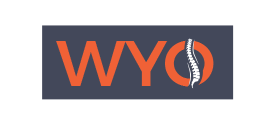Spine Osteotomy
Severe spinal deformity may occur in conditions such as Scheuermann's kyphosis, iatrogenic flat back, post-traumatic, neuromuscular, congenital and degenerative disorders, and ankylosing spondylitis. Severe deformity causes symptoms that may include a subjective sense of imbalance, leaning forward (stooping), early fatigue, intractable pain, and difficulty in a horizontal gaze.
What is Spine Osteotomy?
Spine osteotomy is a surgical procedure in which a section of the spinal bone is cut and removed to allow for correction of spinal malalignment.
Indications of Spine Osteotomy
Spine osteotomy is usually suggested for the correction of severe, rigid and fixed spinal deformities, when non-surgical treatments do not relieve symptoms such as numbness, weakness or pain due to nerve compression, or when the deformity is worsening over time. A mild or flexible deformity is usually corrected through positioning and instrumentation.
Types of Spine Osteotomy
Spine osteotomies can be broadly divided into three main types. The type of osteotomy performed depends on both the location of the spinal deformity and extent of correction required. A spinal fusion with instrumentation may also be performed along with spine osteotomy to stabilize the spine and prevent further curvature. The three main types of osteotomy are:
Smith-Petersen osteotomy (SPO): SPO is recommended for relatively small corrections (approximately 10-20° for each level). In this procedure, a section of bone is removed from the back of the spine, which is causing the spine to lean more toward the back. The posterior ligament and facet joints are also removed from this area. An anterior bone graft is not used in this procedure as motion through the front portion of the spine or the discs are required for correction. SPO may be performed at one or multiple locations along the spine to restore lordosis.
Pedicle subtraction osteotomy (PSO): PSO is generally recommended for corrections of approximately 30°, mainly at the lumbar level. PSO involves all three front, middle and back columns of the spine. It involves the removal of back element and facet joints like a SPO and a portion of the vertebral body along with the pedicles. PSO allows for more correction of the lordosis than SPO.
Vertebral column resection osteotomy (VCR): VCR involves the complete removal of a single or multiple vertebral bodies. It allows for maximum correction, which can be achieved with any spinal osteotomy. As VCR introduces a large defect in the spine, spinal fusion is also performed over these levels for reconstruction. Spinal fusion may involve the use of a structural autograft, structural allograft or metal cage. Initially, VCR was performed through a combined front and back approach, but now it can also be performed through only a back approach.
Outcomes of Spine Osteotomy
A spine osteotomy procedure significantly improves the symptoms of a spinal abnormality. It reduces pain and restores balance so that you can stand erect without the need to flex your hips or knees. It also improves gross appearance (cosmesis) and even makes a horizontal gaze possible. Functional improvement of the visceral organs may also occur.



 Pay Your Bill
Pay Your Bill Request an Appointment
Request an Appointment

 Driving Directions
Driving Directions